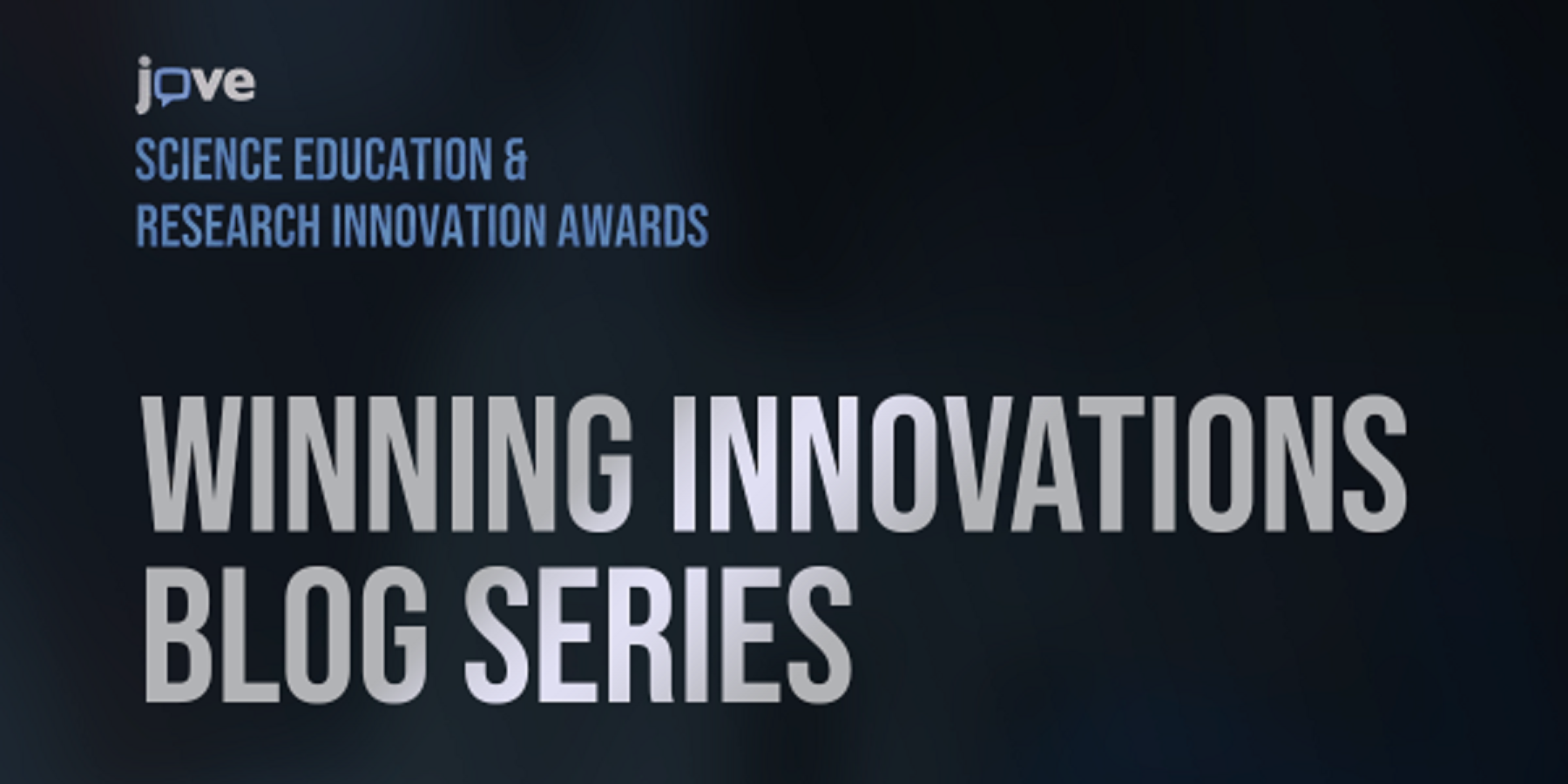The 2021 JoVE Science Education and Research Innovation awards have paved the way for a series of blog posts highlighting how science educators, researchers, and librarians worldwide have used visual resources to support their remote efforts. We hope these blog posts based on each of the winner’s webinars will help find practical answers to the questions imposed while juggling online or hybrid formats.
In last week’s 2021 JoVE Innovation awards webinar, Dr Glenn Hurst, Associate Professor at the University of York, UK, dived deep into his educational approach based on a systems-thinking theoretical framework. To hear actionable suggestions and tips discussed in the hour-long webinar, request a complimentary recording of the entire webinar session.
Below are the top highlights of his discussion during the Q&A section of the webinar:
Are textbooks dead? Or are video resources additional tools to traditional text resources
Dr Hurst highlights that students must become independent learners and engage with educational materials like textbooks and journals. On the other hand, the use of social media is for the sake of convenience to reach out and continue engaging students quickly. Social media encourages contextualisation and is more effective than books alone. It’s a medium to keep students in the loop with new concepts that allow instructors to be creative and create tasks where students can record themself experimenting and open a discussion with their classmates. It’s an impactful tool to share experimental parameters. If one group of students perform and post, the other group can learn methods or provide a critical review. Digital classes certainly cannot replace textbooks but can complement the other.
Many instructors are unaware of social media features? What would you recommend in this case?
Dr Hurst explains that as an instructor who uses social media platforms, he could disseminate the importance of using social media through his work. Additionally, when these efforts turn out positive, it’s easier to influence other instructors. There’s always professional assistance available to receive training for those not aware of the various social media features and functions. Internal teams within educational institutions or social media platforms can help set up one-on-one or institution-wide training sessions. He further adds that it’s essential to have more ambassadors like himself to set an example.
He also suggests that innovative approaches can be sprinkled across various programs and made their own. One need not follow the other but instead make this approach their own to begin. The rest of it is a learning process that can adapt over time. They could even start with initiating tasks for students to create their accounts first, perform small experiments through the platforms and then come in as an educator to initiate discussion break-out room chats or one-on-one feedback sessions.
Gen-Z Students use shortcuts for almost everything. Does this approach of using digital platforms by instructors add to it? Back in the day, students were required to struggle and find concepts, ask questions and learn. What has changed since then? Does critical thinking still exist?
Dr. Hurst explains that times have changed and critical thinking is still essential. He insists that by creating social media-based assessments, students are more independent. This requires them to critically review existing literature while recreating and performing their experiments without help. It’s an ongoing concern, though and a broader debate about the effectiveness of social media — balancing the act and using digital platforms as a supplementary tool and not replacing traditional tools this approach can work.
Dr. Hurst says he has developed a particular educational approach based on a systems-thinking theoretical framework. That lets students learn the relevance of holistic systems, recognize the interconnection of dynamic systems components and promote a lateral understanding of the subject.
Students could act as partners through this new approach and develop the skills to address complex global issues by working more interdisciplinary and systematic (critical components of 21st-century employability). This framework was implemented in multiple contexts (within natural sciences and green chemistry), delivering to different audiences using a range of innovative teaching methodologies (including the creative use of visual media and integration with social media platforms during COVID-19).
Have new approaches like using social media and systems-thinking, resulting in better grades?
According to Dr. Hurst, learning gains were measured throughout the process and there has been positive progress in students’ learning outcomes and comprehension. A survey conducted to identify the effectiveness of his approach determined that students consider this approach a revision resource. He further adds that it’s an ongoing challenge to pinpoint the exact increase or decrease in positive results, but it’s going well and ending in benefits for both students and teachers.
What if students don’t want to use social media?
Dr. Hurst responds that he tries to be inclusive and paramount to everyone’s decisions. He allows students to create a new account and create videos with voiceovers instead of appearing in them. However, many students may still not be comfortable in such a situation; instructors must have backup options and be flexible. It’s critical to understand that this is not an obligation but only a new approach.
To learn more about Dr. Glenn Hurst’s approach to utilizing social media to enhance student engagement, provide contextualization with everyday applications and give students a glimpse into his life as a researcher — and other key takeaways, request a recording of this session.

